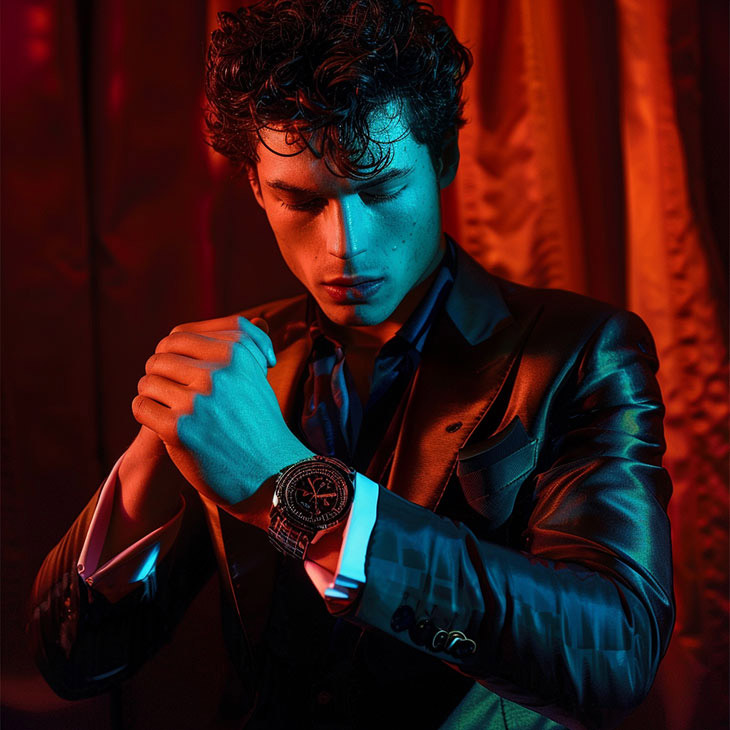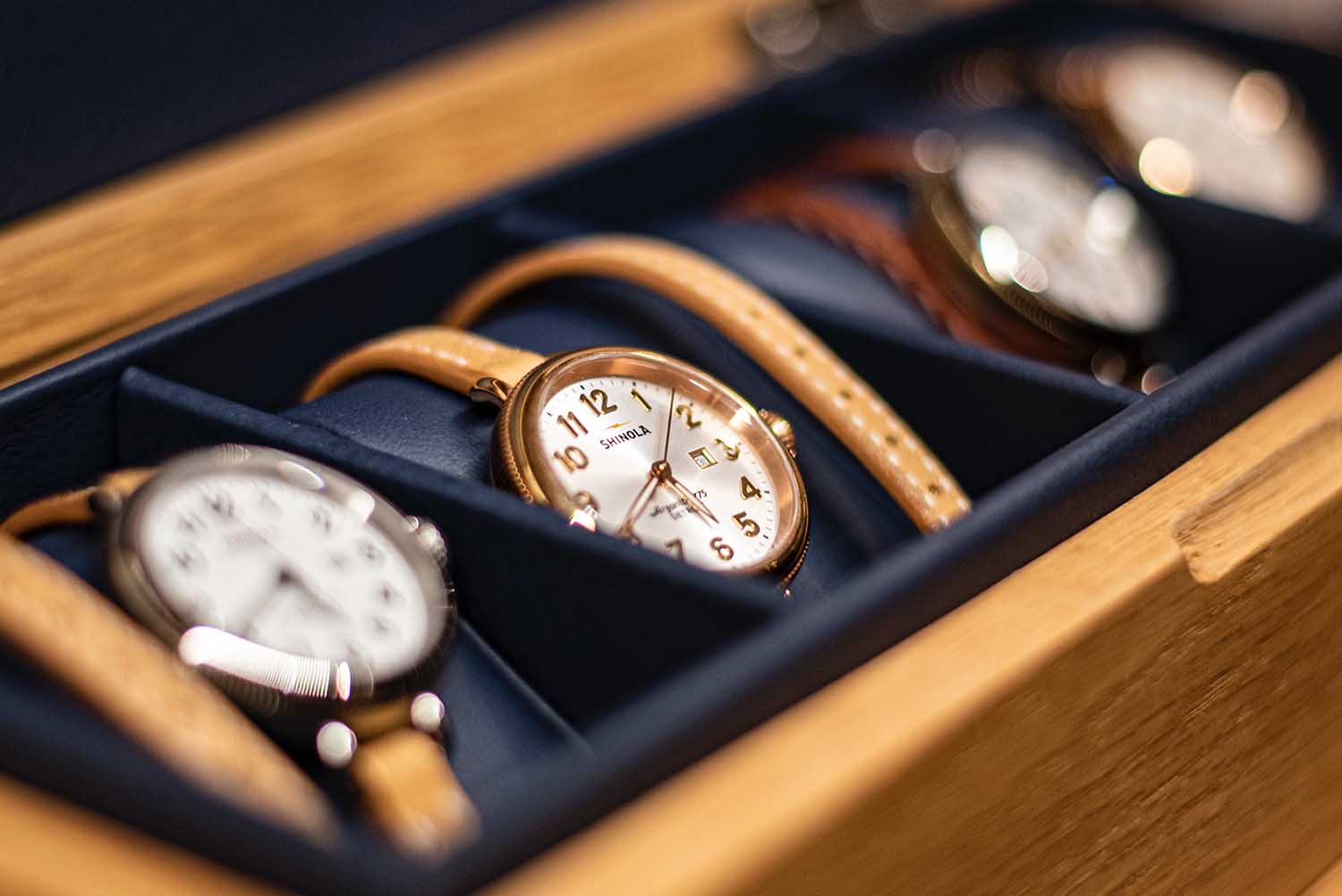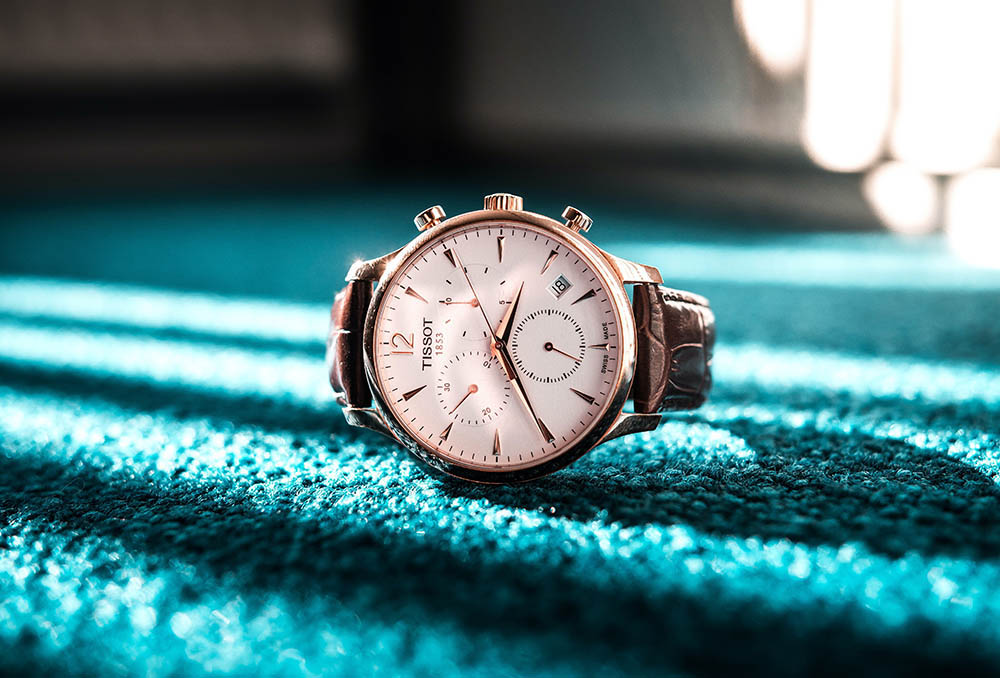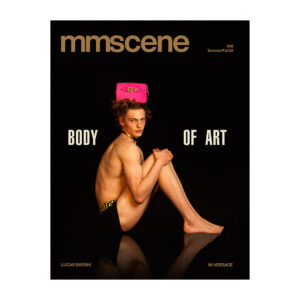
Watches come in different styles, movements, and functionalities. Consumers looking for the perfect watch for ordinary days and special occasions have many options.
In this comprehensive guide, you’ll find out the different types of watches to help you choose the perfect pieces for your needs.
Watches by Type of Movement
Watch movement refers to the mechanism inside the watch that powers it and keeps time.
-
Mechanical Movement
Here are the two types of mechanical movement:
- Manual Watches
Manual or hand-wound watches require regular winding by turning the crown to tighten the mainspring, which stores energy to power the watch. These watches are ideal for enthusiasts who appreciate traditional craftsmanship and enjoy the ritual of winding their watches daily. They suit individuals who value the tactile experience and intimate connection with their timepieces. Manual watches are often favored for formal occasions or as dress watches, where their classic charm and simplicity shine.
- Automatic Watches
Automatic or self-winding watches have a rotor, winding the mainspring and don’t need manual winding as long as worn regularly. 1010 Boutique says watches have a minimum of turns per day (TPD) required to keep them working, and a proper watch winder will be able to keep watches wound to the proper number.
Automatic watches are perfect for individuals with busy lifestyles who prefer a low-maintenance timepiece. They are well-suited for everyday wear, offering convenience and reliability without the need for manual winding. Automatic watches are popular among professionals and casual wearers alike, providing a blend of mechanical fascination and modern convenience.

-
Quartz Movement
Quartz watches use a battery to send an electric current through a small quartz crystal, which oscillates at a precise frequency to regulate timekeeping. These watches are highly accurate and require minimal maintenance. They require battery replacement every two to three years.
The reliability and affordability of quartz watches make them suitable for those who prefer a hassle-free timepiece. They are popular choices for professionals, students, and anyone seeking a dependable watch without the need for regular winding. Quartz watches are also favored for travel due to their accuracy and resistance to magnetic interference.
- Kinetic Movement
Kinetic watches combine the technology of automatic and quartz movements. They have a rotor like an automatic watch but instead of winding a mainspring, the rotor charges a rechargeable battery. The battery then powers the quartz movement, providing accurate timekeeping.
Kinetic watches are versatile timepieces suitable for both casual and formal wear, providing reliable performance without the need for frequent battery replacements. They are popular choices for outdoor enthusiasts, professionals, and those who value sustainability.
- Solar Movement
Solar watches convert sunlight’s energy into electric energy. Hence, they don’t need replacement batteries. They are ideal for environmentally conscious individuals who seek a low-maintenance watch with long-term reliability. Solar watches eliminate the need for battery replacements, making them cost-effective and convenient options.
Solar watches are well-suited for outdoor activities, travel, and everyday wear, providing accurate timekeeping without relying on external power sources. Solar watches are also favored for their durability and resistance to environmental factors.

Watches by Functionality
Watches can be categorized by functionality. Each type of watch functionality serves different preferences and purposes, ranging from classic timekeeping to advanced features and technology integration. Users can choose the type of watch that best suits their lifestyle, aesthetic preferences, and desired functionality.
-
Analogue Watches
Analogue watches display time using traditional hour and minute hands, along with hour markers on a numbered dial. They often have a classic and timeless design, suitable for various occasions and personal styles.
-
Digital Watches
Digital watches use electronic displays to show time in numerical form, typically with hours, minutes, and sometimes seconds displayed in digits. They may also include additional features like alarms, timers, and backlighting for enhanced visibility.
-
Chronograph Watches
Chronograph watches incorporate stopwatch functionality, allowing users to measure elapsed time with precision. They typically feature additional subdials or pushers on the watch case for controlling the stopwatch functions.
-
Hybrid Watches
Hybrid watches combine analogue and digital elements, offering the traditional look of an analogue watch with smartwatch features. These watches often feature analogue hands for timekeeping along with digital displays or connectivity for notifications, activity tracking, and other smart functions.
-
Smart Watches
Integrating with smartphones, smartwatches offer features like notifications, fitness tracking, GPS navigation, and app support. They provide convenience and connectivity for modern users, combining traditional watch functions with advanced technology.
-
Field Watches
Originally designed for military use, field watches are rugged and durable, often featuring a simple and easy-to-read design with luminescent markers. They’re suitable for outdoor activities and everyday wear.
-
GMT Watches
GMT watches display multiple time zones simultaneously, making them ideal for travelers or individuals who frequently communicate with people in different parts of the world. They typically feature an additional hand or subdial for the second time zone.
-
Diving Watches
Designed for underwater diving, these watches are built to withstand water pressure. These timepieces have water resistance, luminescent dials for visibility in low light, and rotating bezels to track elapsed time underwater.
-
Pilot Watches
Originally designed for aviation professionals, pilot watches often feature large, legible dials with luminous hands and markers for easy reading in various lighting conditions. They may also include features like chronographs and slide rule bezels for navigation calculations.
-
Dress Watches
Characterized by their elegant and minimalist design, dress watches are typically thin, sleek, and understated. They’re suitable for professional settings and formal occasions, often featuring precious metals and leather straps.
-
Fashion Watches
Fashion watches prioritize aesthetics over precise timekeeping and are often considered as part of the jewelry category. Despite being generally less expensive than luxury watches, they can still carry a significant price tag. Many fashion watches utilize quartz movements and may lack intricate details. Designers often curate entire collections around specific styles, incorporating accessories like leather handbags, belts, scarves, and wallets.
-
Luxury Watches
Luxury watches serve as both fashion accessories and timepieces, distinguished by their exceptional quality of materials, craftsmanship, and unique designs. They are meticulously hand-finished and draw inspiration from historical designs refined over centuries, embodying exquisite artistry and narrative. Luxury watches are not hastily produced; rather, they represent enduring pieces of craftsmanship and heritage.

Final Thoughts
As you can see, you have a wide array of choices when it comes to watches, which complement various outfits and personal styles. When selecting the best watch, consider your lifestyle, needs, and preferences. Choose a style that best aligns with your aesthetic taste, whether classic, modern, or sporty. Assess the required features and functionalities and factor in considerations like budget, brand reputation, and craftsmanship for quality and value.








